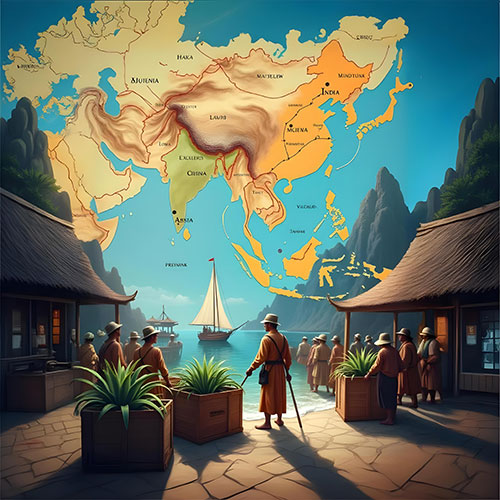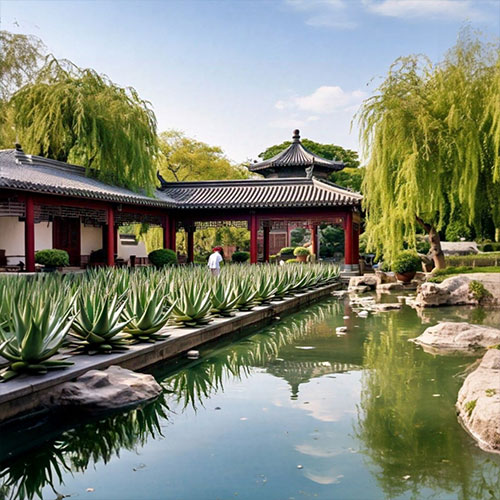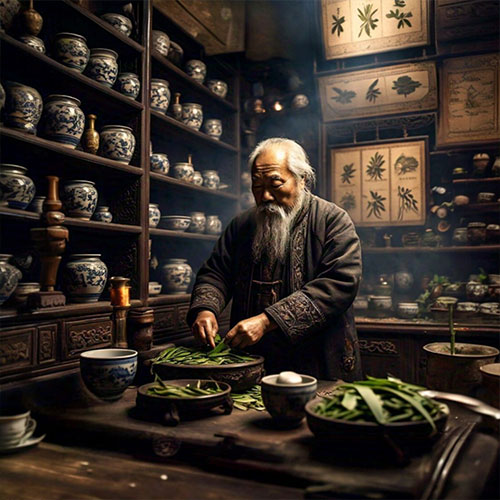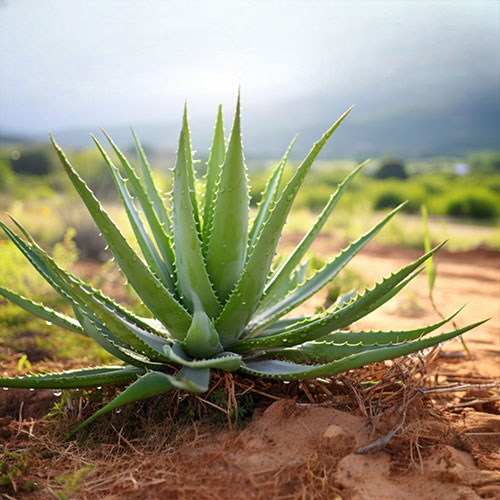






Aloe vera, revered for its soothing and healing qualities, has journeyed across continents and cultures, adapting to each region's traditions and practices. When it arrived in China during the 18th century, it was welcomed with open arms and became a treasured addition to the country’s rich history of natural remedies. This blog explores aloe vera’s integration into Chinese horticulture, traditional medicine, and daily life, highlighting its enduring legacy.
In the 18th century, China was a hub of vibrant trade, with bustling ports connecting the country to the rest of the world. Aloe vera arrived in China via maritime routes, brought by traders from India and Southeast Asia who sought to introduce this versatile plant to new markets.
The plant quickly captivated the Chinese, who appreciated its resilience and multitude of uses. Aloe vera's arrival coincided with China’s flourishing interest in horticulture, herbal medicine, and natural beauty practices, paving the way for its integration into daily life.
Aloe vera’s introduction to China wasn’t just practical—it was aesthetic. Chinese gardeners, known for their skill in creating harmonious landscapes, began cultivating aloe vera in their serene gardens. The plant’s unique appearance and low maintenance made it a popular choice for ornamental use.
Often planted near ponds or alongside willows and pagodas, aloe vera added to the visual and spiritual tranquility of traditional Chinese gardens. These spaces weren’t just for beauty but served as a reflection of balance and harmony in nature, ideals deeply rooted in Chinese culture.
China’s deep connection to natural healing practices found a new ally in aloe vera. Traditional Chinese Medicine (TCM), which emphasizes balance within the body, quickly recognized the plant's cooling and restorative properties.
Aloe vera was used to treat a variety of ailments, including burns, skin irritations, and digestive issues. Herbalists incorporated its gel into remedies, often blending it with other medicinal plants like licorice, chrysanthemum, and honeysuckle. These mixtures were carefully prepared to enhance the plant’s natural benefits, aligning with the principles of TCM to promote holistic well-being.
The plant's cooling nature made it particularly valuable in treating "heat" conditions in the , a concept in TCM that refers to imbalances causing inflammation or discomfort.
Beyond medicine, aloe vera found a place in the everyday lives of Chinese households. Its gel was applied directly to burns, cuts, and insect bites, offering immediate relief. As a natural skincare ingredient, aloe vera became a favorite for soothing and hydrating the skin, especially in hot and dry climates.
Traditional practices like steaming herbal concoctions often included aloe vera, providing nourishment and comfort to families. Women used the plant in beauty rituals, applying its gel as a natural face mask to rejuvenate and refresh their skin.
Today, aloe vera remains a staple in Chinese culture, bridging ancient traditions and modern wellness trends. Packaged aloe vera gels, beverages, and skincare products line the shelves of markets across the country.
The spa and wellness industry has also embraced aloe vera, offering treatments that celebrate its hydrating and healing properties. Despite these modern innovations, many Chinese families still grow aloe vera at home, valuing the plant for its simplicity and effectiveness, just as their ancestors did.
Aloe vera’s journey to China is a testament to its adaptability and universal appeal. From its introduction in the 18th century to its integration into Chinese gardens, medicine, and daily life, aloe vera has become an enduring symbol of natural wellness.
Its legacy continues to thrive in China, where ancient practices meet modern innovations. Whether in a bustling apothecary of the past or a contemporary spa, aloe vera remains a cherished part of the country’s approach to health and beauty, reflecting the timeless connection between nature and human well-being.
Coming Up Next: A Naturalized Wonder—Aloe Vera in Africa!
Journey with us as we explore how aloe vera became a beloved plant across the diverse landscapes of Africa. In this chapter, we’ll delve into how this resilient and healing plant was embraced for its medicinal properties, deeply woven into the continent’s traditions of wellness and skincare. Discover the fascinating story of aloe vera’s arrival and its naturalization in Africa!